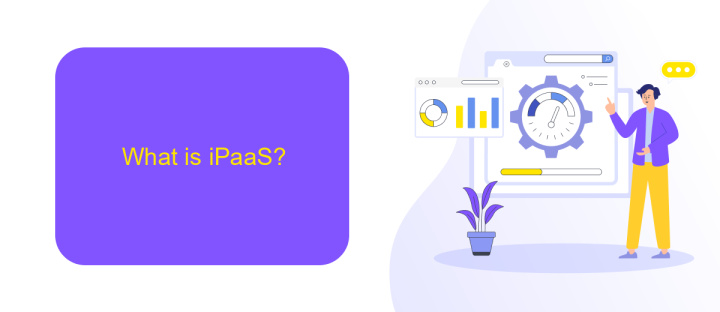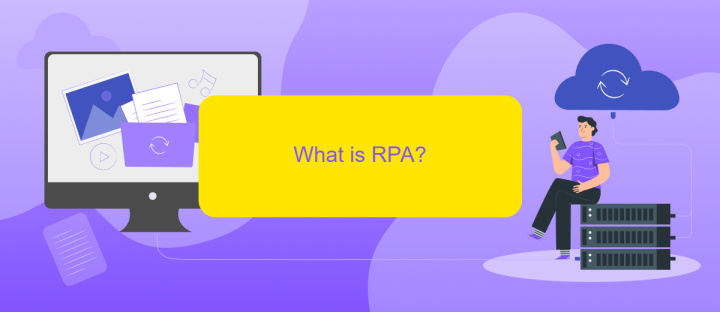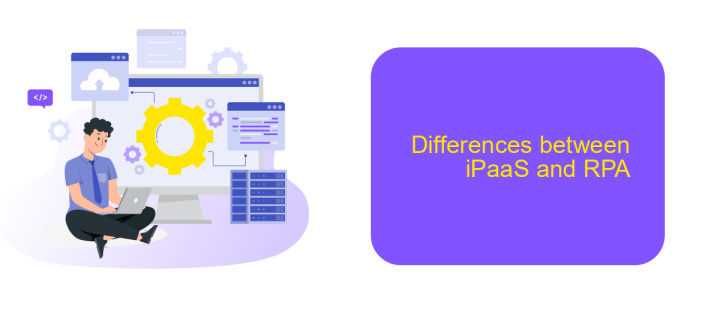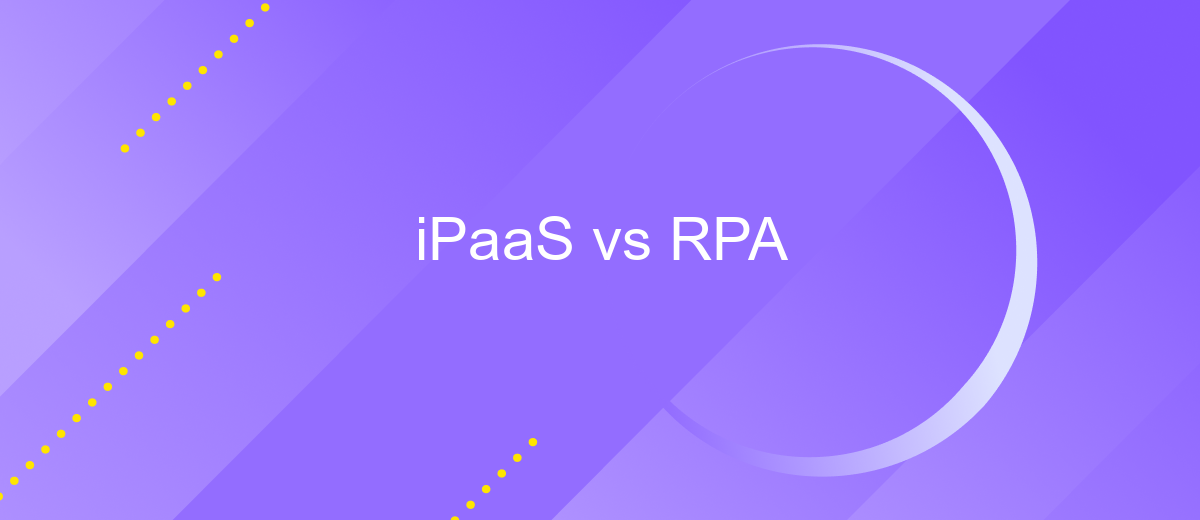iPaaS vs RPA
In today's rapidly evolving technological landscape, businesses are increasingly turning to automation to streamline operations and enhance efficiency. Two prominent solutions in this space are Integration Platform as a Service (iPaaS) and Robotic Process Automation (RPA). This article explores the key differences, benefits, and use cases of iPaaS and RPA, helping you determine which is best suited for your organization's needs.
Introduction
In today's rapidly evolving digital landscape, businesses are constantly seeking ways to streamline operations and enhance productivity. Two popular solutions that have emerged to address these needs are Integration Platform as a Service (iPaaS) and Robotic Process Automation (RPA). While both technologies aim to improve efficiency, they serve different purposes and offer unique benefits.
- iPaaS: Facilitates seamless integration between various software applications and services, ensuring data flows smoothly across systems.
- RPA: Automates repetitive, rule-based tasks, freeing up human resources for more strategic activities.
Understanding the differences between iPaaS and RPA is crucial for businesses looking to optimize their workflows. For instance, platforms like ApiX-Drive can simplify the integration process, allowing organizations to connect disparate systems effortlessly. By leveraging the strengths of both iPaaS and RPA, companies can achieve greater operational efficiency and drive innovation.
What is iPaaS?

Integration Platform as a Service (iPaaS) is a cloud-based solution that simplifies the process of connecting different applications, systems, and services. By providing a centralized platform, iPaaS allows businesses to integrate disparate data sources and streamline workflows without the need for complex, custom-coded solutions. This approach enhances efficiency, reduces operational costs, and ensures that all integrated components can communicate seamlessly. iPaaS platforms typically offer a user-friendly interface, making it accessible even for those without extensive technical expertise.
One notable example of an iPaaS provider is ApiX-Drive. This service enables businesses to set up integrations quickly and effortlessly, connecting various applications and automating data transfers. With ApiX-Drive, users can integrate CRM systems, email marketing tools, and other business applications, ensuring that data is synchronized and workflows are optimized. This not only saves time but also minimizes the risk of errors, providing a reliable and efficient integration solution for businesses of all sizes.
What is RPA?

Robotic Process Automation (RPA) is a technology that allows businesses to automate repetitive and rule-based tasks typically performed by human workers. By using software robots or "bots," organizations can streamline processes, reduce errors, and improve efficiency without the need for extensive coding or complex system integrations.
- Automates repetitive tasks: RPA can handle mundane tasks such as data entry, invoice processing, and customer service inquiries.
- Reduces human error: Bots follow predefined rules, ensuring tasks are completed accurately and consistently.
- Enhances productivity: By taking over routine tasks, RPA allows human employees to focus on more strategic and value-added activities.
- Integrates with existing systems: RPA tools can work with various applications and systems without the need for extensive modifications.
For businesses looking to further enhance their automation capabilities, services like ApiX-Drive can be invaluable. ApiX-Drive simplifies the integration of different software applications, enabling seamless data flow and communication between systems. This not only complements RPA efforts but also ensures a more cohesive and efficient operational environment.
Differences between iPaaS and RPA

iPaaS (Integration Platform as a Service) and RPA (Robotic Process Automation) serve distinct purposes in the realm of business automation. iPaaS focuses on integrating various software applications and services, enabling seamless data flow and communication between them. On the other hand, RPA automates repetitive, rule-based tasks typically performed by human workers, such as data entry and invoice processing.
While both iPaaS and RPA aim to improve efficiency, their core functionalities differ. iPaaS platforms like ApiX-Drive are designed to create and manage integrations between cloud-based and on-premises applications. RPA tools, however, mimic human actions to perform specific tasks within existing systems without the need for deep integration.
- Scope: iPaaS focuses on data integration; RPA focuses on task automation.
- Functionality: iPaaS connects disparate systems; RPA mimics human actions.
- Complexity: iPaaS requires configuration of data flows; RPA requires scripting of tasks.
- Use Cases: iPaaS is ideal for real-time data synchronization; RPA is suited for automating repetitive tasks.
In summary, while iPaaS and RPA both enhance operational efficiency, they do so through different approaches. iPaaS platforms like ApiX-Drive excel in integrating diverse systems, whereas RPA tools are best for automating manual, routine tasks.
When to use iPaaS and RPA
iPaaS (Integration Platform as a Service) is ideal for businesses that require seamless integration between various cloud-based and on-premises applications. It is particularly useful for organizations dealing with a complex IT ecosystem, where different systems need to communicate and share data in real-time. For instance, using a service like ApiX-Drive can simplify the process of connecting multiple apps, automating data transfer, and ensuring that information flows smoothly across platforms. This is essential for businesses aiming to enhance operational efficiency and data accuracy.
On the other hand, RPA (Robotic Process Automation) is best suited for automating repetitive, rule-based tasks that do not necessarily require integration between different systems. RPA is beneficial for tasks such as data entry, invoice processing, and customer service activities. It allows employees to focus on more strategic activities by offloading mundane tasks to software robots. While iPaaS focuses on integration and data flow, RPA excels in automating individual processes within a single system, making both technologies complementary in a comprehensive digital transformation strategy.


FAQ
What is the primary difference between iPaaS and RPA?
Can iPaaS and RPA be used together?
Which is better for automating data entry tasks, iPaaS or RPA?
How do I choose between iPaaS and RPA for my business needs?
What are some common use cases for iPaaS?
Apix-Drive is a simple and efficient system connector that will help you automate routine tasks and optimize business processes. You can save time and money, direct these resources to more important purposes. Test ApiX-Drive and make sure that this tool will relieve your employees and after 5 minutes of settings your business will start working faster.

